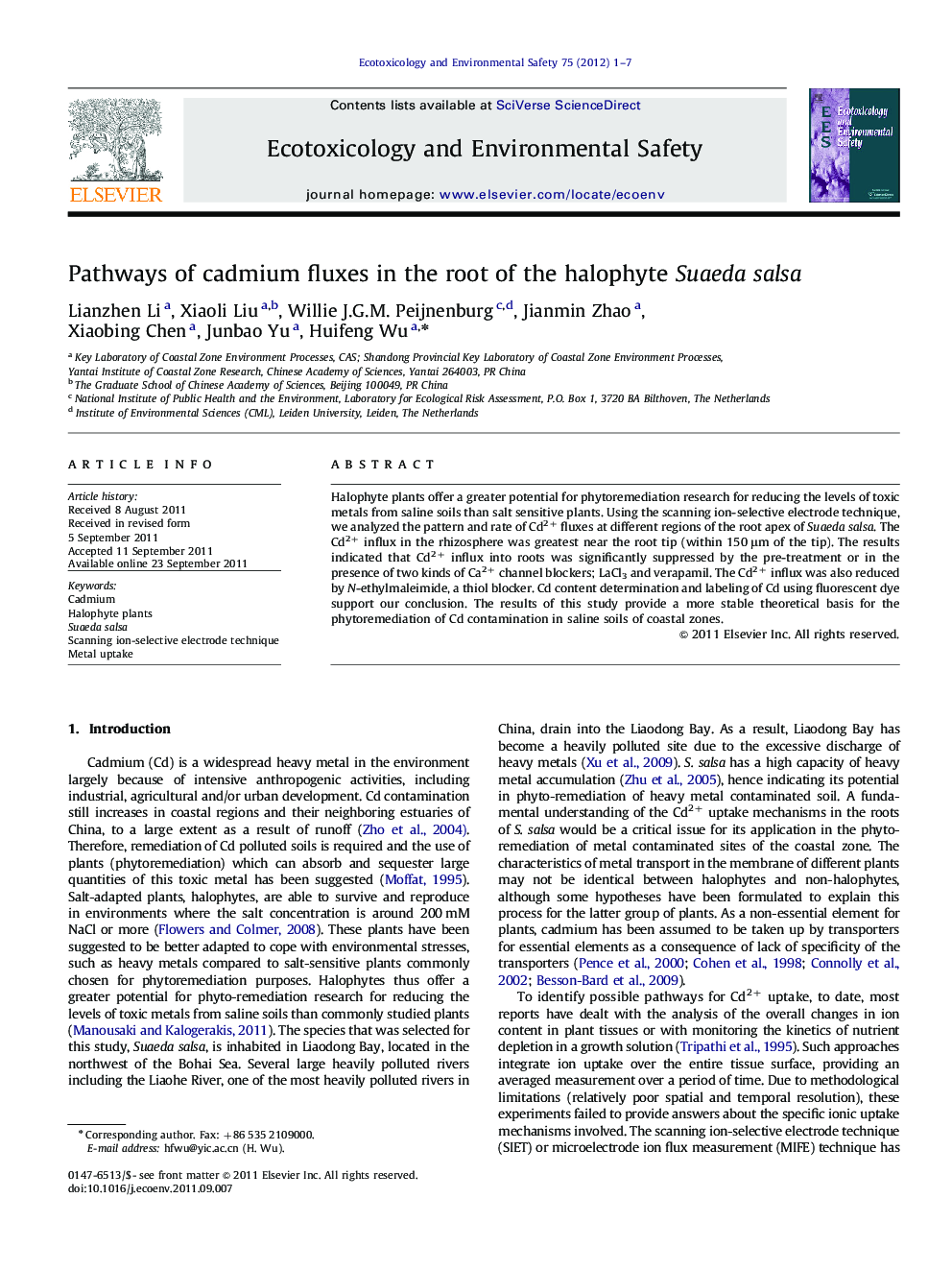| Article ID | Journal | Published Year | Pages | File Type |
|---|---|---|---|---|
| 4421040 | Ecotoxicology and Environmental Safety | 2012 | 7 Pages |
Halophyte plants offer a greater potential for phytoremediation research for reducing the levels of toxic metals from saline soils than salt sensitive plants. Using the scanning ion-selective electrode technique, we analyzed the pattern and rate of Cd2+ fluxes at different regions of the root apex of Suaeda salsa. The Cd2+ influx in the rhizosphere was greatest near the root tip (within 150 μm of the tip). The results indicated that Cd2+ influx into roots was significantly suppressed by the pre-treatment or in the presence of two kinds of Ca2+ channel blockers; LaCl3 and verapamil. The Cd2+ influx was also reduced by N-ethylmaleimide, a thiol blocker. Cd content determination and labeling of Cd using fluorescent dye support our conclusion. The results of this study provide a more stable theoretical basis for the phytoremediation of Cd contamination in saline soils of coastal zones.
► We analyzed the pattern and rate of Cd2+ fluxes at the root apex of Suaeda salsa. ► Cd2+ influx was greatest near the root tip (within 150 μm of the tip). ► Cd2+ influx into roots was significantly suppressed by the Ca2+ channel blockers. ► Cd2+ influx was reduced by N-ethylmaleimide, a thiol blocker. ► Cd content determination and labeling using fluorescent dye support our conclusion.
